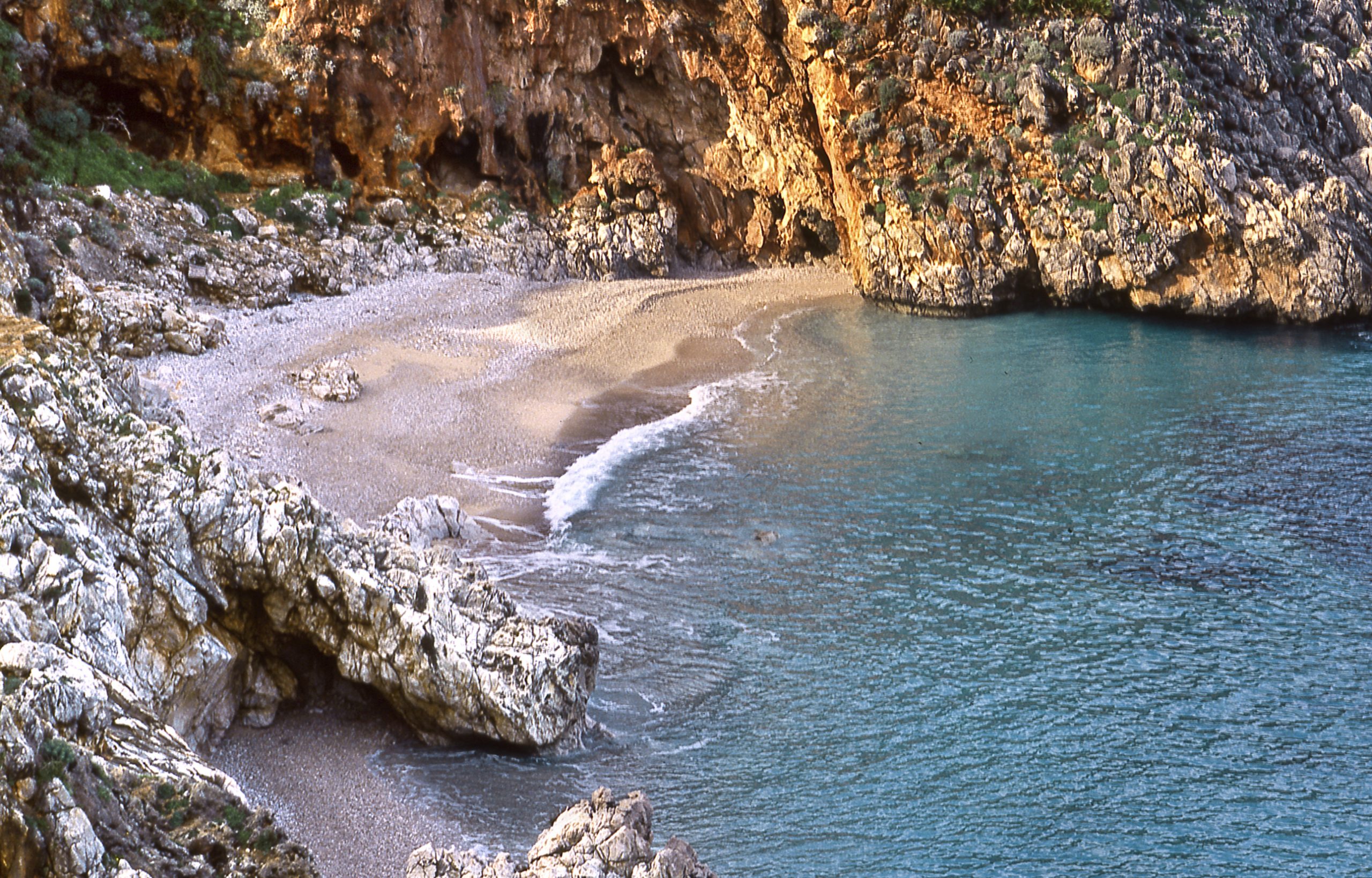Scopello, San Vito Lo Capo, Marsala and surroundings
Detail
Let's discover some of the most fascinating places on the western Tyrrhenian coast in the province of Trapani.
After sunset, the ancient village of Scopello becomes particularly evocative. Walking through the narrow streets is an immense pleasure. During the long summer days, perhaps on our way back from the Zingaro Nature Reserve, we can find shelter in the shade of a fig tree and eat u pani cunzatu: a triumph of simplicity and strong flavours, homemade bread with olive oil, anchovies and tomato.
Now, after a refreshing morning swim, let's get going!
Today’s first destination is Segesta, a secluded hilltop site of a well-preserved Greek temple and theatre, both very well-preserved.
Just looking around confirms how skilful the ancient Greeks were at choosing beautiful places to build their most important buildings! The best time to visit these places is early in the morning. After a meditative pause, to breathe in the that special atmosphere of the past and clear our minds, we set off towards our next destination: San Vito lo Capo.
Not so many years ago it was a quiet and peaceful fishing village . However, just four little white houses dotted a beach more than three kilometres long, broad and white, and with a warm and clear sea rolling onto the beach of such an emerald colour that it looks as if it had been taken from the Caribbean. All this has made San Vito lo Capo one of Sicily’s most sought-after tourist bathing sites! With hotels, restaurants, cafés and shops, you are spoilt for choice. However, the inhabitants try to harmonise all this with respect for the area. The beach is always fabulous, well-equipped and able to cater for a multitude of guests.
In the evening, we head to the main street to stroll in the “struscio“, an all-Sicilian custom, characterised by the sound of footsteps walking back and forth along the main street until late into evening. To perfectly capture this relaxed atmosphere, strolling in flip-flops or, better still, barefoot, day or night, let’s enjoy a tasty caldofreddo, the typical San Vito Lo Capo ice-cream that mixes cold and hot ingredients, and cous cous.
This is the famous raw wheat semolina that arrived on our plates from North Africa (maybe on the Sirocco wind?) to accompany succulent fish, legume or meat dishes. San Vito is also home to the Couscous Fest, the international festival dedicated to this dish and the meeting of cultures.
Food enthusiasts should also remember to sample the local cannoli, for example, those made in Dattilo (a hamlet of Paceco), particularly delicious hand-made delicacies with a light crumbly wafer.
Now let’s follow the sea until Trapani, where we reach the imposing mountain of Erice with its summit town that is one of the oldest settlements in Sicily. It is said to have been founded by the Elymians, the island’s oldest inhabitants, eight centuries before the birth of Christ. It is worth climbing those hairpin bends (or reaching the top with the panoramic cable car) for a refreshing walk in an intimate and special atmosphere. Only after visiting the belvedere gardens, the medieval towers, the Castello di Venere and the Chiesa Madre, can we continue and wander through the narrow streets, perhaps to taste the famous Erice almond cakes and buy one of the colourful carpets made of “stracci” (rags).
The down-town of Trapani awaits us. Here we could take a ferry or hydrofoil for a trip to the Egadi Islands, but this time, we head south, we certainly don’t want to miss the Saline salt pans with their characteristic windmills, which we saw from above on our way down from Erice.
In these large basins, the sea evaporates, leaving behind the salt, which is accumulated in small mounds covered with tiles to shelter it from the wind. Working tools and objects from the past are preserved in the Salt Museum. After the visit and an evening apéritif, a perfect meal for the occasion is a sampling of the typical sea bass cooked in salt (some mills are also restaurants). Here the sunset is unforgettable:: we can watch the colours of the sky reflected in the water mirrors of the salt pans.
On the road to Marsala, we can also make a detour to see Mozia, a tiny island steeped in history.
It can be reached by boat in just a few minutes. In ancient times, it could be reached by wagon or on the back of a mule via a path at water level. Its precious Antiquarium houses a sculpture masterpiece: the celebrated “Kuros”, the Youth of Mozia.
If Garibaldi’s “Mille”, the “thousand volunteers”, landed precisely in Marsala, there must have been a reason! You can almost see it in the proud faces of the older citizens of Marsala as they stroll through the streets of the centre of this elegant town. Not to be missed is the Norman duomo of St. Thomas of Canterbury and a visit to see the remains of a Punic ship at the Baglio Anselmi Archaeological Museum.
Don’t forget to taste Marsala: this is the sweet fortified wine that has made this town famous all over the world as a “European City of Wine” since 2013.
Share this content!
AROUND






